Computer slowing down because you're almost at your hard drive storage limit? With cloud storage that scenario is almost nonexistent. The only question left is, should you store your business files via Google Drive for web or locally by installing the Google Drive Sync app on your PC? Get all the answers in this video and learn more on which option is best for you.
Contact our team to learn more about G Suite or organise a Guided Trial.
Transcription:
G'day there, Peter Moriarty here. I have another question to answer for Rebecca. And Rebecca asks, “Is it best to put all my files in the cloud, in Google Drives web interface, or should I synchronize them down to my computer?”
Stemming from the '90s when we got our first email address and we wanted to conserve space by deleting the spam emails in our inbox, because if we get too many emails it would fill up and we'd start getting bounce backs and stuff. Or I think about the Microsoft Outlook days, where if you got too many emails in your local data file, it would fill up. And once it was full, search would stop working, Outlook would start crashing, and you'd start having all those kinds of problems. Based on those historical events, we still have the mentality in our minds that we need to keep out digital spaces clean.
It's certainly still important to not fill up your hard drive on your computer, but I really have the mentality and I try and instill this in our customers as much as possible, to just treat digital storage as unlimited. If you're on G Suite and you subscribe to the business plan, you get unlimited storage. And it's not unlimited with a fair play policy, it's literally unlimited. I personally have terabytes and terabytes of 4K Drone footage, all kinds of stuff stored inside my Google Drive. It never slows down, Google never complains about how much data I've got in there, and it all works brilliantly. So if you're still thinking, “Hey, I should keep my digital spaces clean.” Then don't worry about that. Just make good use of all of Google's effectively infinite storage.
To specifically answer the question of should I keep files on my computer or should I have them all on the cloud? Well, Google makes it very easy with an application called Google Drive File Stream. Google File Stream is an app that sits on your computer. It's similar to the Google drive sync app that Google have now rebranded and rebuilt into File Stream. Now, it works the same way as a Google Drive app did or that Dropbox did, but with a few special features. But the old Google Drive app or with the Dropbox app, you've got to kind of choose, “What folders do I want to have local and what folders do I want to have up on the web?” And you've got manage that data and think about it yourself. Whereas File Stream does all of this automatically and it does it really well.
So what does Google File Stream do? Well, it takes each one of your files that you've got in your Google Drive online, and it lets you see them all from the local desktop. So you're looking at the cloud, but you're actually browsing on the local desktop. So if you're on a Mac or you're on a PC or you're a Chromebook, you see your whole Google Drive and you see all of your team drives as well. While you can see all those files, if you go to open one of them, Google actually downloads it in the background. So it's not actually stored on your machine until you click open, and it goes to open that file. And Google's got some AI smarts in there, so they're going to automatically download the files in the background when you've recently used them. It also predicts what files you might want to use in the future, and it keeps a copy of last few files that you used just on your machine just in case you want to open them again. So if you happen to, say, be offline and you want to get access to one of those files again, Google makes it really easy for you to just click through by Google File Stream and you can access the file.
You might ask, “Well, what if I'm completely offline?” If you completely offline and you want access to a certain folder or a certain file using Google File Stream, you just right click on that file, and then you say, “I want to keep this file offline.” And that keeps either the file or the folder offline and synchronized down to your computer.
If you've got a bunch of files and you want to upload them to the cloud or drop them into your Google Drive, you can drag and drop it into File Stream. Google's going to upload all of those so they're stored on Google Drive online, and then it does this little cleanup and it removes them locally.
Should I have them online or offline? It doesn't really matter. They're all secured by your Google account and once files on the computer you're able to access them anytime you need. But Filestream really takes out the guessing game that you used to have to do with the old Google Drive app, or you still have to do with the Dropbox app, of ticking or unticking the selective sync of, “Do I want this file on or off?” It's all a manual process, whereas File Stream just uses AI to automate all of that.
So think about when you might need those files. If you're going to need them offline, you might select a certain folder or file structure to stay offline. Otherwise, personally, I tend to just leave most things online, but I still definitely use Google File Stream so I can access them easily. Anyway, if you need any help with File Stream Google Drive, rolling it out, setting up permissions, or just doing an audit to check on how you've got things set up, get in touch with our team, itGenius.com, or you can message us on Facebook. Until next time, I'll see you in the next video. Cheers.
Contact our team to learn more about G Suite or organise a Guided Trial.




